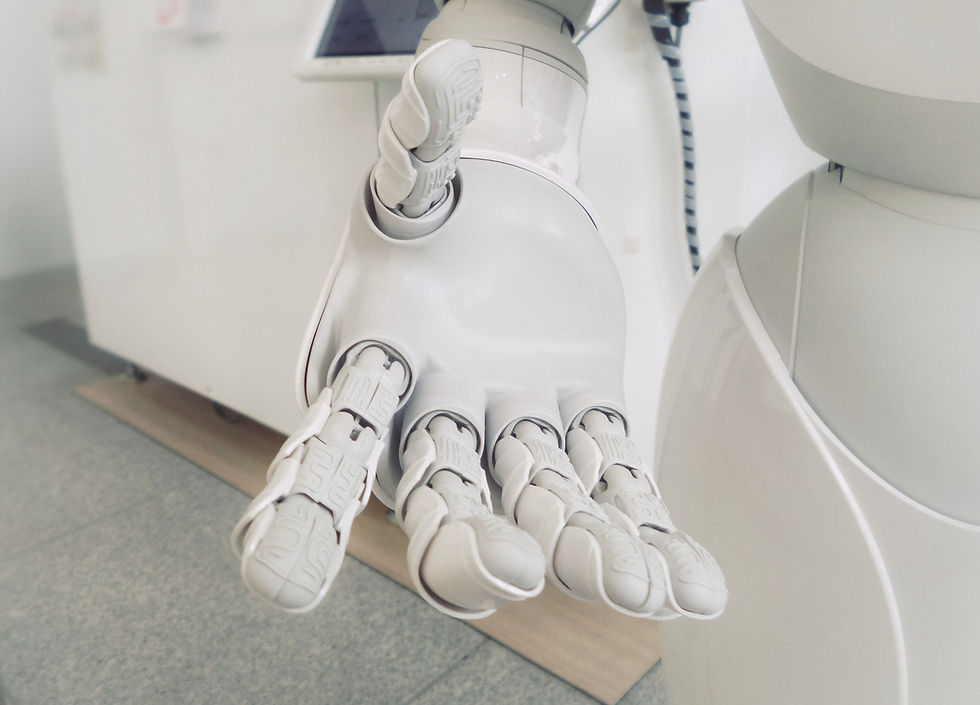What It Really Takes to Be AI-Ready in HR
- Elizabeth McFarlan Scott

- Jul 17
- 4 min read
And Why It’s More Than Just Picking the Right AI Tools
AI is everywhere. It’s in your inbox, your workflows, your dashboards, and probably in your executive team’s top priorities for the year. But while it’s easy to talk about AI in big, visionary terms, many leaders are grappling with something more practical:

You might be leading the charge on AI strategy, tasked with figuring out where to begin. Or you might be trying to move from strategy to execution but feeling stuck in pilot mode. You may even be mid-rollout, juggling conflicting priorities and trying to show progress to your board or workforce.
Wherever you are, it’s important to remind yourself: being AI-ready isn’t just about buying software or experimenting with chatbots. It’s about preparing your people, your data, your leadership, and your infrastructure to use AI in a way that’s thoughtful, responsible and beneficial to the business.
Start With the “Why”
Before we talk about readiness, we need to talk about purpose.
Companies that make meaningful progress with AI don’t start with a tool. They start with a reason. A business imperative. Something that genuinely needs solving.
That might be improving customer experience, reducing labor costs, supporting a productivity shift, or addressing growing employee expectations around modern tools. In some cases, the push comes from the board. In others, it comes from teams on the ground who are trying to work smarter with fewer hours.
Whatever it is, the goal has to be clear, and it has to matter.
Readiness Means People First
AI may be powered by data and models, but adoption is powered by people. That’s why employee engagement needs to be part of your readiness strategy from day one.
Some organizations have seen success by positioning AI not as a threat, but as an opportunity:
A chance to learn transferable skills. Even if certain tasks change, the experience with AI can make employees more valuable over time.
A path to more meaningful work. By reducing repetitive tasks, AI can help people focus on what they do best: the parts of the job that require judgment, empathy, or creativity.
A way to work “at the top of your expertise.” Whether you’re an engineer, an analyst, or a recruiter, AI can be a co-pilot, not a replacement.
Creating a culture where experimentation is safe and failure is okay is also critical. AI isn’t always smooth or linear, and employees need to know it’s okay to test, learn, and adapt.
What AI Readiness Actually Looks Like
Readiness can be thought of in three core areas: leadership, technical infrastructure, and organizational capability.
1. Leadership Readiness
AI needs more than buy-in. It requires ownership from the top. That means:
Leaders articulating a vision for how AI supports the business, not just IT.
Active sponsorship (removing roadblocks, funding experiments, and celebrating progress).
Willingness to make data-informed decisions, even when the insights challenge old habits.
Investment in not just tools, but people: training, upskilling, and support.
The tone from the top matters. If AI is positioned as a strategic enabler rather than a cost-cutting scheme then it changes how teams engage with it.
2. Technical Readiness
You don’t need to build custom models in-house to be AI-ready. But you do need solid data and infrastructure.
Clean, centralized data that’s labeled, secure, and accessible.
A scalable tech stack that can support ongoing innovation.
Integration with core systems (like HRIS, CRM, and workflow tools).
Clear data governance: privacy, compliance, and ethical use are not optional.
Think of AI as a new hire. If your data is a mess and your systems don’t talk to each other, that “new hire” won’t be able to do much.
3. Organizational Readiness
This is the part that often gets overlooked. True readiness means:
Basic AI literacy across the organization. Not just among data teams, but across HR, finance, operations, and more.Clear roles and responsibilities. Who governs the use of AI? Who builds? Who validates outputs? Who handles errors?
Frameworks for responsible AI use. Policies for fairness, transparency, auditability, and human oversight.
A change management plan that doesn’t just inform, but engages.
People need to understand not just what is changing, but why. That means early, honest communication and ongoing dialogue that goes beyond a one-time rollout email.
Final Thoughts
AI fluency is quickly becoming a core skill, much like computer literacy once was. Employees don’t need to code, but they do need to understand how AI works, where it helps, and how to use it responsibly. Leading organizations are already making this part of onboarding and development.
Being AI-ready doesn’t mean having it all figured out. The first crucial step is having the right foundations: a clear purpose, supportive leadership, quality data, and a workforce that’s ready to learn and adapt.
Start small. Stay focused on real needs. And bring your people with you.
The companies that do this won’t just adopt AI. They’ll shape how it works for them.
Need a partner to help you figure out AI in HR? We are here to help! Get in touch.





Comments